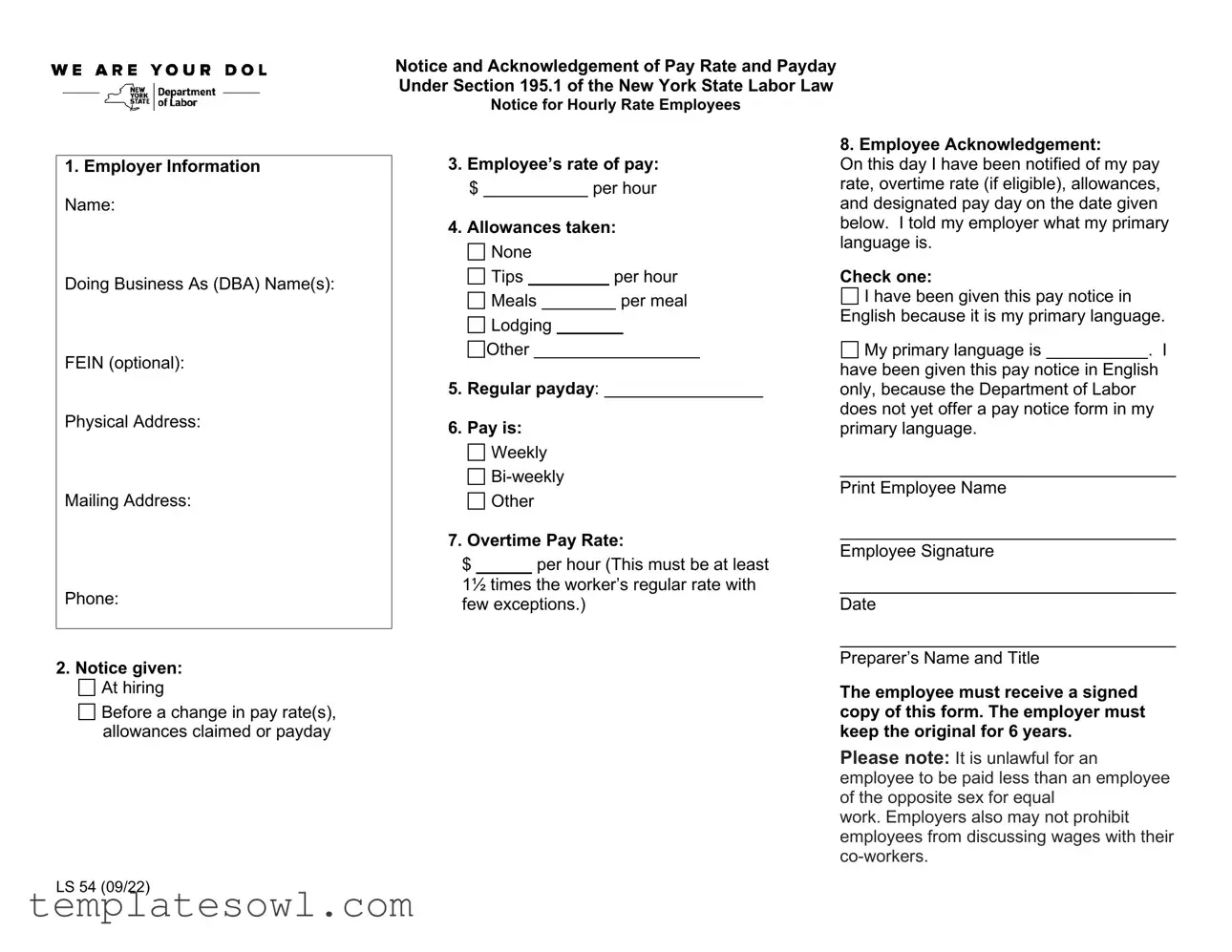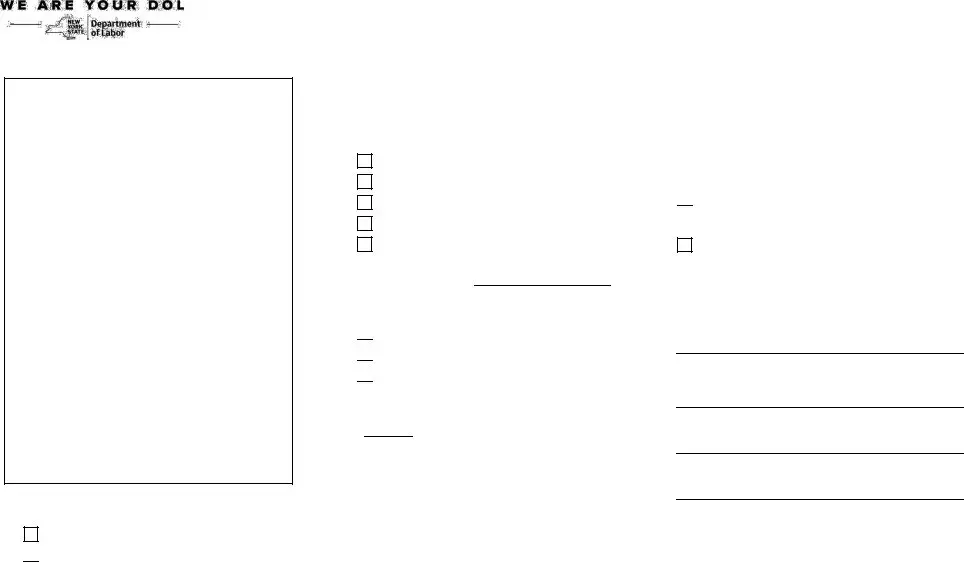Filling out the LS-54 form accurately is essential for both employers and employees to ensure compliance with New York State Labor Law. However, several common mistakes can lead to misunderstandings and potential legal issues. Awareness of these pitfalls can aid in the proper completion of the form.
One frequent mistake is failing to provide accurate employer information. The name of the employer, including the "Doing Business As" (DBA) designation, must be clearly stated. If this information is incorrect or incomplete, it can cause complications in case of disputes or inquiries regarding the employee's pay rate and employment status.
Another common error occurs with the notice section. Employers must check the appropriate box, indicating whether notice was given at hiring or before a change in pay rate. Choosing the wrong option or leaving it unchecked can create issues regarding evidence of compliance with notification requirements. Documentation should be thorough to protect the rights of both parties.
Additionally, misreporting the employee’s rate of pay can lead to confusion. Employers should ensure that the hourly wage is filled in accurately, as any discrepancies can result in wrongful pay claims. It is crucial to verify this rate before submitting the form.
Many individuals overlook the section regarding allowances taken. Even if no allowances are present, it's vital to denote that by checking the "None" option. Omitting a response here could lead to assumptions regarding wage deductions, causing employees to feel misinformed about their earnings.
It is also important to specify the regular payday correctly, as this sustains transparency between employee and employer. Mislabeling the pay schedule, whether it is weekly, bi-weekly, or another frequency, can disrupt financial planning for employees and create unnecessary confusion.
Lastly, employees must provide their acknowledgment accurately. This section allows them to communicate their primary language and confirm receipt of the pay notice. Failing to fill out this part, or providing incorrect information, may limit an employee’s ability to understand their rights and protections under labor laws.
By avoiding these common mistakes when completing the LS-54 form, both employers and employees can foster a clearer and more compliant workplace environment.


 Weekly
Weekly
 Other
Other I have been given this pay notice in English because it is my primary language.
I have been given this pay notice in English because it is my primary language. Before a change in pay rate(s), allowances claimed or payday
Before a change in pay rate(s), allowances claimed or payday